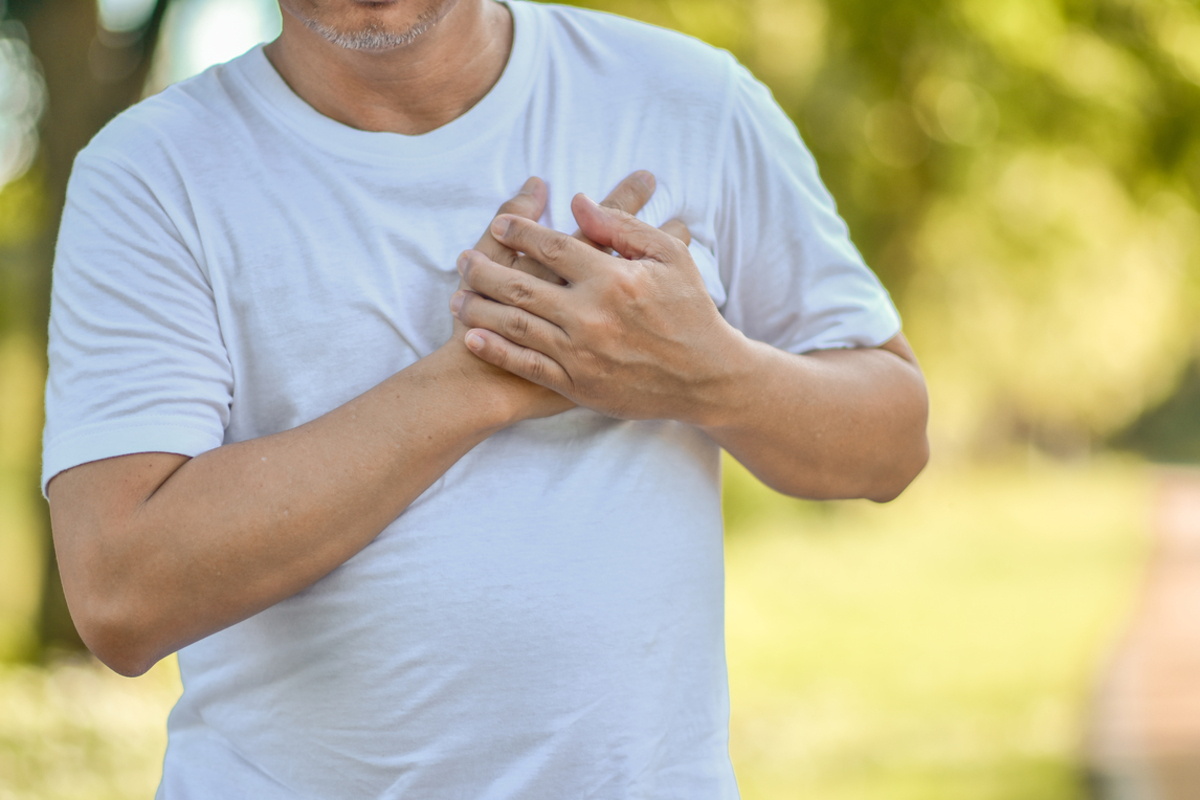The aorta is the biggest and most important artery in your entire body. It carries oxygen-rich blood directly from the heart to almost every part of your body, via its branches. As soon as it exits the heart's left ventricle through the aortic valve, it forms the aortic bulb, goes up (ascending aorta), curves around the heart in the shape of a cane (aortic arch), and then goes down (descending or thoracic aorta) through the diaphragm, now called the abdominal aorta.

The aorta's wall is made up of three layers:
- The intima — the innermost, smooth layer in direct contact with blood
- The media — made mostly out of elastic and muscular fibers
- The externa — the outer layer composed mostly of collagen fibers
Over time, the aorta, along with all the other arteries in your body, begins to deteriorate. The reasons for this are numerous, and range from different genetic factors to leading an unhealthy lifestyle, involving smoking, junk food, and lack of physical activities. All these factors accelerate the process of atherosclerosis, where plaque made of fat, cholesterol and calcium forms on the interior aortic wall. This process, along with high blood pressure, presents the most common culprit in aneurysm formations.
Together, all these factors may damage the aortic wall, causing it to lose its elasticity and making it less flexible. Gradually, the wall permanently expands thanks to formation of weaker spots in some of the parts of the aorta. This permanent, local expansion of the aortic lumen is called an aortic aneurysm.
Because the aortic wall is now significantly thinner, complications may ensue. These complications can vary from an inability to supply some internal organs (causing organ failure!), to the formation of blood clots that eventually break off, causing a heart attack or a stroke. The biggest issue, however, is the potential rupture of the aorta — if this vessel bursts, it results in massive and easily fatal internal bleeding.
What are the symptoms of an aortic aneurysm?
Symptoms are defined as effects that only the patient themselves notices. On the other hand, signs can be observed and assessed by your doctor.
Physical examinations don’t provide much in the way of precise data, so doctors primarily rely on imaging methods to diagnose aneurysms. Most symptoms are non-specific and usually related either to complications, or other cardiovascular diseases. Aneurysms are most commonly discovered accidentally, during routine examinations, or when searching for some other health issues. Most patients do not have any symptoms at the time of the initial diagnosis.
When taking your history, your doctor will ask you a lot of questions related to your family medical history, as well as ones associated with your daily habits, such as smoking, physical activity, and lifestyle in general. Try to answer honestly and with more detail, because every answer is a new puzzle piece doctors use to assemble the whole picture regarding your health.
Aortic aneurysm: Symptoms and signs
The symptoms and signs may include:
- Chest pain spreading to the neck, jaw, or back, in ascending aortic aneurysm. It can also be a manifestation of a heart attack caused by a detached blood clot.
- Back pain in descending (thoracic) and abdominal aortic aneurysm.
- Groin pain in abdominal aortic aneurysm.
- Coughing, along with difficulties and a high-pitched wheezing sound when breathing is caused by compression of the windpipe.
- Hemoptysis (coughing up blood) is a manifestation of aneurysm rupture into the bronchi.
- Hoarseness, caused by the compression of the left laryngeal recurrent nerve, which innervates the vocal cords.
- Difficulties when swallowing food and water are caused due to compressions in the esophagus.
- Hematemesis (vomiting blood), if the aneurysm ruptures into the esophagus.
- Hematochezia (bloody stools), when the rupture takes place somewhere in the digestive track.
- Weakness and paralysis on one side of the body, which may be signs of stroke.
- Pain and redness in arms and legs, if a blood clot breaks off and blocks the blood path to your extremities.
- A pulsating sensation in your belly area, most commonly around the navel, which feels like some kind of an abnormal heartbeat.
Circulatory shock symptoms caused by a ruptured aortic aneurysm
Symptoms can include:
- Sudden, sharp and severe pain in your chest, back, or belly area
- Sweating
- Shortness of breath
- Dizziness
- Nausea and vomiting
- Low blood pressure
- Fast heartbeat
- Loss of conscience


Your thoughts on this